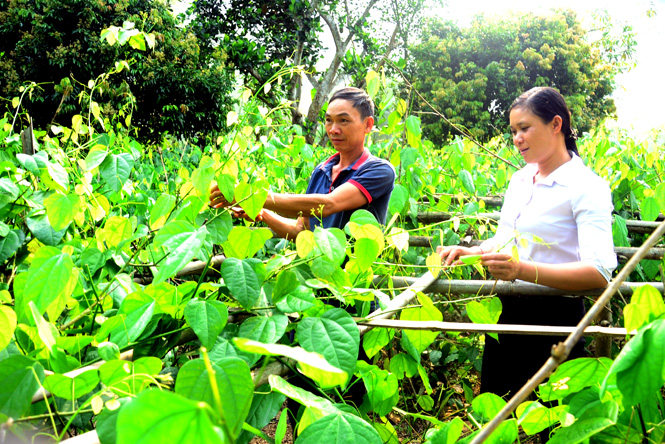Seeing the effectiveness of the jiaogulan vegetable model, Hong Quang Commune has expanded its use over a total area of 1.5 hectares. Households participating in planting vegetables have been provided with 16,000 seedlings. Currently, the jiaogulan planting model has also been implemented in the communes of Lang Can, Xuan Lap, Tho Binh and Binh An.

A bo khai garden in Na Lung Hamlet, Thuong Lam Commune, Lam Binh District.
In addition, the district has developed nearly 20 hectares of bo khai (erythropalum scandens), surpassing its target by 31.5%. Bo khai is mainly grown in Lang Can and Thuong Lam Communes. Lang Can Commune has grown 10.08 hectares of bo khai in total, thereby meeting market demand. Bo khai is usually harvested from the second to the ninth lunar month and can be sold at between VND40,000 - VND50,000 VND per kilogramme.
Bo khai growers in Nam Dip Hamlet, Lang Can Commune have joined hands to provide the vegetables to homestay establishments, restaurants and service businesses, seeing a profit of between VND30 million and VND40 million per year.
The district is home to nearly 20 hectares of bo khai, 5 hectares of jiaogulan, and 2 hectares of ngot rung (Melientha suavis). These types of vegetables have contributed to diversifying specialty vegetable products, attracting tourists, and increasing the incomes of the locals.

Comment
Print